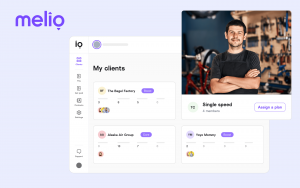How Can Pinterest, the Fastest-Growing Site Ever, Become a Data-Driven Business?
![]() Pinterest is the new phenomenon of the Web. Statistics show that Pinterest generates four times more revenue per click than Twitter, and increases revenue by 27 percent more per click than Facebook. Undoubtedly, the success of Pinterest may be due to fact that it provides a component of interest and social exchange that is contextually relevant content to users and their friends.
Pinterest is the new phenomenon of the Web. Statistics show that Pinterest generates four times more revenue per click than Twitter, and increases revenue by 27 percent more per click than Facebook. Undoubtedly, the success of Pinterest may be due to fact that it provides a component of interest and social exchange that is contextually relevant content to users and their friends.
Now SAP in association with social media consumer insights firm NetBase in a report on the five million conversations about the social media revealed that Pinterest is fastest growing social startup site ever, suppressing Facebook, Twitter, blogs and other social media resources. In fact, Pinterest has become the 16th most visited site in the United States, according to recent data from market research firm Alexa with more than 13 million followers that pin their lives on the social site.
Users love the picture platform
.
![]() If the success of Pinterest no longer needs to prove itself, it’s still noteworthy that women are the most active users on the social network. In terms of demographics, women constituted more than 60 percent of the online conversations, with the remaining 40 percent by men.
If the success of Pinterest no longer needs to prove itself, it’s still noteworthy that women are the most active users on the social network. In terms of demographics, women constituted more than 60 percent of the online conversations, with the remaining 40 percent by men.
Users find the platform for discovering and sharing recipes as the most interesting topic on the social site, followed up by decorating and event-planning.
The report suggested that the pinning social media site doesn’t require much change when it comes to the layout, as more than one third of users praised the site as beautifully designed. On the ergonomic side, Pinterest offers a very pleasant, simple and highly visual experience.
Creating a data-driven marketplace
.
The simplicity of Pinterest’s social tools and the specific indication of consumer interest in products and places makes Pinterest a valuable repository full of data. Given Pinterest’s public nature (there’s no private boards), every pin, re-pin and like represents some level of interest and desire from the consumer. Combined with the fact that Pinterest drives more clicks that convert into purchases, the site has become a marketers haven for research and advertising.
While Pinterest has yet to fully capitalize on this particular trend, anxious third parties are creating an ecosystem around the popular pin board network. Pinfluencer is one of the most recent and most notable to hit the scene, providing insight for brands and their competitors regarding their Pinterest engagement.
Retail is a very specific sector that’s benefiting from Pinterest’s popularity, and this is the industry Pinfluencer is targeting with its analytics platform.
“The intresting thing about the data we’re collecting is it’s not just brand engagement the way you see on Facebook and Twitter. Pinterest is driving merchandising decisions,” says Pinfluencer cofounder Sharad Verma. “We know your most popular pins and categories on Pinterest…and it’s a very social shopping experience.
“It reduces the barriers to product discovery. You suddenly see a social feed of products that followers have pinned, and got a lot of re-pins. There’s lots going on conversationally–one person wants to wear this dress tonight, while another wants to wear this when partying with friends. This creates the context that drives purchases.”
Learning lessons from predecessors
.
![]() Pinterest grew so fast because it was an original idea, executed in the right way at the right time. It is not just another copy of the giants on the web (Facebook and Twitter to name a few), but the social network faced many of the same copyright issues its predecessors have faced, bubbling up this year in particular.
Pinterest grew so fast because it was an original idea, executed in the right way at the right time. It is not just another copy of the giants on the web (Facebook and Twitter to name a few), but the social network faced many of the same copyright issues its predecessors have faced, bubbling up this year in particular.
A small percentage of users (about five percent) are still worried that they themselves could be guilty of copyright infringement. Moreover, lots of users complained that hefty use of Pinterest results in loss of productivity and other problems.
Furthermore, the site is getting hooked by spammers. The platform is beginning to suffer in the form of spam from stores wanting to send traffic to different offers. There’s lessons to be learned from Twitter in particular, a very public platform that had to tweak its network, sharing mechanisms and algorithms to combat spam.
There’s two types of spam on Pinterest that Verma has identified: the kind meant to generate revenue by the insertion of misleading pins, and the kind that’s meant to generate traffic. The first is a huge obstacle for Pinterest to overcome as it continues to gain traction, and the pin-board network has already taken steps to stop revenue-generating spam from proliferating across the site. And Verma also points out that a good portion of spam will be largely ignored by the Pinterest community, making spam a difficult tactic to scale on the interest-based social network.
“Given that Pinterest has been gaining popularity and people are trying a lot of ways to game it, I don’t think this tactic will scale,” Verma says. “Pinterest will take action. I used to be at Yahoo search when it first started–you had keywords and people started stuffing these keywords into their pages to gain rank, and Yahoo addressed it. Same thing with Pinterest. I’m pretty certain they’ll have a pin quality measure to address ongoing spam.”
Remaining business challenges
.
![]() Even as Facebook and Twitter struggle to perfect their business models for converting consumer data into profit, Pinterest will have to overcome the same challenges. Building a business model around consumer data is an industry all its own, revolutionized by social media. Context is the key to success for today’s era, and Pinterest has devised a unique network around consumer interest. But how can it turn context into business?
Even as Facebook and Twitter struggle to perfect their business models for converting consumer data into profit, Pinterest will have to overcome the same challenges. Building a business model around consumer data is an industry all its own, revolutionized by social media. Context is the key to success for today’s era, and Pinterest has devised a unique network around consumer interest. But how can it turn context into business?
Wayfair CEO Niraj Shah sees opportunity in an API for Pinterest, which would serve the dual purpose of providing an important point of integration for retailers while also extending a seamless experience for the consumer. “There’s lots of opportunity to engage interest off of Pinterest.com to other places people are browsing and getting style ideas,” says Shah.
Verma agrees that Pinterest has some important gaps to fill as it becomes a true business, noting two key things Pinterest is missing. The first is the lack of custom URLs, which Facebook and now Google+ have already extended to the business world. The second is Pinterest’s missing marketplace, though Verma thinks it’s only a matter of time before Pinterest begins exposing their database to brands and retailers seeking a “persistent pin experience.”
How Pinterest handles their business relations could ultimately make or break their business–embracing the developer community with open arms would only enhance the ecosystem emerging around Pinterest activity, and this has worked well for Facebook. Alienating their developer community as Twitter has done could result in an even longer struggle as they try to fill in their own gaps while re-taking control over their ecosystem.
A decision-riddled path lies before Pinterest, lined with opportunities, burdens and pitfalls. But with a highly active user base, it seems there’s no end to Pinterest’s goals for long-term success.
Contributors: Saroj Kar
A message from John Furrier, co-founder of SiliconANGLE:
Your vote of support is important to us and it helps us keep the content FREE.
One click below supports our mission to provide free, deep, and relevant content.
Join our community on YouTube
Join the community that includes more than 15,000 #CubeAlumni experts, including Amazon.com CEO Andy Jassy, Dell Technologies founder and CEO Michael Dell, Intel CEO Pat Gelsinger, and many more luminaries and experts.
THANK YOU

















